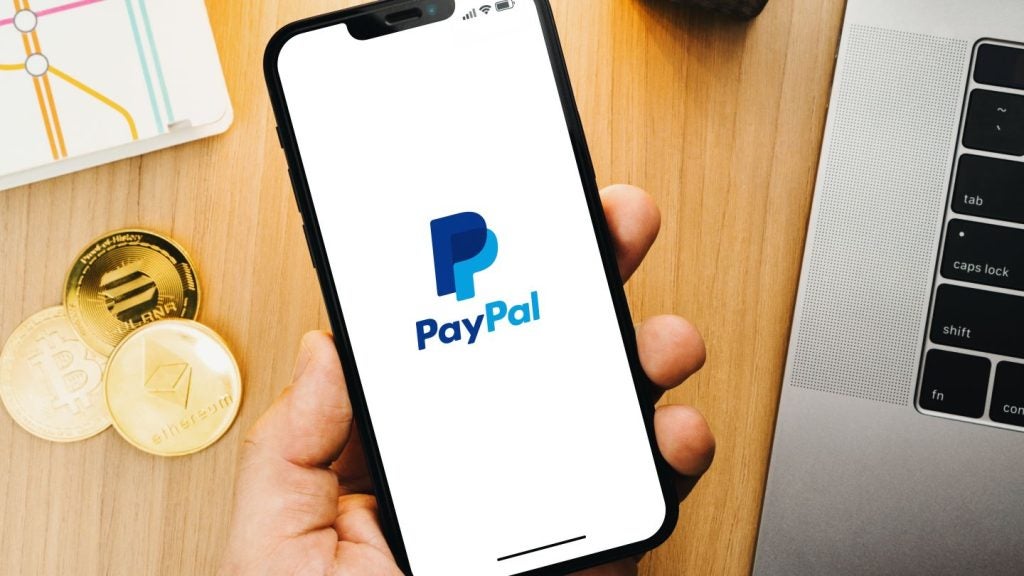Canadian and US banks generally provide a single mobile app for banking and credit card account management, and the most advanced examples also include fraud prevention. Robin Arnfield reviews leading North American issuers’ offerings, and their key features and innovations
“When the mobile channel was first introduced, there was a lot of discussion among North American banks about whether they should have standalone apps for different products,” says Tiffani Montez, senior analyst at US-based Aite Group.
“Those credit card issuers that also have other banking products primarily want one front door in terms of the mobile interaction with the consumer.
“Consequently, most US banks and credit unions don’t have separate apps for different products such as credit cards, mortgages or chequeing accounts,” Montez continues.
“It’s just one mobile app with access to all accounts, depending on the type of relationship a customer has with that financial institution.
“Generally, the apps let cardholders obtain balance information, make bill payments, see purchase information, view rewards, and track spending. Some issuers, such as Capital One, have apps that allow you to view your credit score.”
Montez expects issuers to increasingly offer more mobile-first credit card account-management features in their apps, instead of just replicating features provided in their online services, given that customers always have their smartphone with them.

US Tariffs are shifting - will you react or anticipate?
Don’t let policy changes catch you off guard. Stay proactive with real-time data and expert analysis.
By GlobalData“For example, they are starting to introduce the ability for cardholders to provide travel notifications, receive spending alerts, set spending thresholds, freeze and unfreeze cards, and report lost or stolen cards via mobile,” she says.
Mobile card applications
In her Aite Group report, US Credit Card Issuers’ Digital Account-Opening Processes, Montez says most US credit card issuers have the basic foundational capability to accept online credit card applications, collecting the data required for the application, verifying applicants’ identity, and presenting disclosures, and ensuring applicants qualify for a specific card.
“Aite Group’s assessment of the mobile application shows the overall immaturity of the account-opening process,” Montez outlines in her report.
“Most mobile application experiences mirror online application experience and, at this point, use few of the phone’s native features to optimise the experience.”
Montez believes that, over the next few years, as customers increasingly shift towards digital channels from branches and call centres, credit card issuers will be under pressure to optimise their mobile and online channels to increase conversion rates.
Card fraud prevention apps
Visa, MasterCard and major US card processors such as Vantiv offer standalone credit and debit card control apps for issuers to provide to their customers to prevent fraud. A key provider of card control software to the processors is US-based Ondot Systems.
“Hundreds of US financial institutions are rolling out these standalone apps to their cardholders,” says Robb Gaynor, chief product officer at US-based mobile banking app vendor Malauzai Software. “The reason for this is that many of the mobile banking software vendors have yet to catch on to including card controls in their apps.”
However, Malauzai has offered credit and debit card control functionality within its mobile banking app for the last four years.
“The first generation of card control software just integrated with a bank’s core banking system,” says Gaynor.
“Our software now offers integration with the card networks and processors for more effective controls. We find that around 15% of our clients’ active mobile bankers go in to the card control module at some point each month.”
Gaynor says Malauzai’s US banking and credit union clients are not using his firm’s mobile banking and card control app yet for credit cards. “Half of our 450 clients have rolled out debit card controls using our app,” he notes. “But it can definitely be used for credit card controls.
“A useful feature which we offer is geo-location controls, which allow cardholders to say that their card can only be used within a 10-mile radius of a particular location. Customers can also use our GPS control to specify that their card has to be used in proximity to their smartphone.
“But we don’t see much uptake of that as it’s heavy on phone batteries. Our most heavily used control feature is turning a card off when it isn’t in use to prevent fraud.”
Gaynor notes that none of his firm’s clients have asked them to provide a standalone app for card controls.
“There’s a big question mark as to whether standalone card controls make sense and as to whether consumers will want a separate app for controlling their cards’ usage,” he says. “Standalone is a strategy the banks and credit unions are forced to pursue because mobile banking vendors are behind. The standalone phenomenon will be short-lived as mobile banking vendors will build the necessary card controls into their apps.”
Market research data
According to Lynda Lovett and Mary-Anne Huestis of Canadian financial market research firm MarketSense, 52% of Canadian credit cardholders have downloaded a mobile banking app, up five percentage points from a year ago.
“Incidence is highest for TD with 12% of cardholders, and Royal Bank of Canada (11%), followed by CIBC (8%), ‘any credit union’ (7%), BMO Bank of Montreal (7%), Scotiabank (7%), Desjardins Group (7%), and Scotiabank’s direct banking subsidiary: Tangerine (7%).”
According to MarketSense, 48% of Canadian survey respondents are interested in using smartphones to redeem rewards, and 32% to book travel. “Both measures are stable over last year,” Lovett and Huestis say.
A survey of 3,000 US adults in June 2016 for Mercator Advisory Group’s US Consumers and Credit: Young Adults Return to Credit Card Use report found that 47% of US smartphone and tablet owners indicated interest in mobile-enabled credit card fraud-prevention controls, up from 44% in 2015 and 41% in 2014. Interest was highest in the 25-34 age group, with 67% in this segment indicating interest in 2016.
“We asked smartphone and tablet owners if they would be interested in a new mobile app from their issuer enabling them to control how and when their credit cards can be used, either to limit spending or avoid fraud, by setting limits by dollar amount, location of the phone, or shopping category, that can be turned on and off in real time,” says Karen Augustine, Mercator’s manager, primary data services.
PFM tools
Several issuers provide credit cardholders with personal financial management (PFM) tools to help with budgeting.
CIBC offers the Personal Spend Manager tool which lets credit cardholders monitor spending, set budgets and create alerts. Currently, CIBC’s Personal Spend Manager is only available to online banking users.
TD offers the TD MySpend app for its bank account and credit card holders, which is based on PFM software from US-based fintech Moven. TD’s MySpend offers real-time notifications and virtual receipts and uses red, yellow and green traffic lights to warn customers when they are spending more, the same, or less than usual.
Desjardins offers the InstaBalance feature which lets credit cardholders view balances without having to log into the Quebec-based cooperative financial institution’s AccèsD mobile banking app. InstaBalance provides budget information such as maximum and minimum account limits and goals in graphical form.
American Express Canada
“American Express Canada is focused on reaching its mobile-first customers via the Amex App,” an Amex Canada spokesperson tells CI.
“In September 2016, we launched Use Points for Purchases, which lets cardmembers redeem points towards purchases made on an eligible American Express card via the Amex Mobile App.”
The Amex App offers personalised notifications for payment and spending reminders, such as payment due, balance updates and statement ready.
Bank of America (BofA)
“Credit card account management is built into BofA’s mobile banking app,” a BofA spokesperson says.
“Our newest feature is a spending and budgeting tool that tracks spending on customers’ BofA deposit accounts and cards, and helps them create budgets.
We recently enhanced our BankAmeriDeals program to show deals based on the customer’s location. Last year, we rolled out free Fico [Fair Isaac Co.] scores and introduced the ability to manage card rewards on mobile.”
BankAmeriDeals offers up to 15% cashback when customers make purchases at selected retailers with BofA debit and credit cards.
Capital One Canada
“Our team of over 80 Toronto-based software studio associates aims to open up new digital possibilities for customers to manage their accounts,” a Capital One Canada spokesperson says.
“Via our mobile banking app for iOS and Android smartphones, Capital One Canada customers can view their credit card transactions, check their balance and available credit, see payment due dates and minimum payment required, view their credit card rewards, and contact customer service within the app.”
Capital One Canada’s mobile app recently added push notifications sending real-time alerts to customers’ phones providing details such as transaction amount and merchant; and multi-factor authentication for security verification.
“The app complements Capital One Canada’s other digital offerings that include text notifications, Live Chat, and Second Look, which sends an automatic email alert when a potential mistake is identified on a customer’s account, such as a duplicate charge,” the spokesperson says.
Citi
In 2016, Citi launched 86 digital features in the Citi mobile banking app, including Quick Lock, which enables cardholders to lock and unlock cards, file a dispute in-app, and track a replacement card. “As a result, in 2016 alone, North America mobile app customers grew by 50% and mobile app downloads doubled,” a Citi spokesperson says. “We saw over 3.25 million downloads in 2016.”
“Our ultimate goal is enabling the entire customer experience – including everything that a customer can do right now by phone or in the branch – in mobile,” Alice Milligan, chief customer and digital experience officer for Citi Global Cards and Consumer Services, tells CI.
Since January 2017, US Citi customers have been able to scan their credit cards using their mobile device’s camera in the Citi Mobile App, instead of having to manually enter their 16-digit card number for activation. Citi says it is the only major US credit card issuer to offer the ability to scan embossed and non-embossed credit cards within a mobile app.
Other features offered by the Citi Mobile App include the managing of replacement cards, Fico scores, redeeming rewards, temporarily locking and unlocking accounts, and setting up alerts.
National Bank of Canada
“All credit card account management features are offered in our mobile banking app, which people who only have a credit card with us can also use,” says Joel Pomerleau, National Bank of Canada’s senior manager of digital channel support and transformation.
“There’s no standalone credit card account-management app. Features offered include balance, transaction history, the ability to off pay card balance, set transaction limits, advise the bank when one is going abroad, cash in points, cashback and loyalty points balance.
“We don’t yet offer the ability to alert the bank via the mobile app if the card is compromised – we’re working on this.”
Instead of developing a proprietary mobile wallet, National Bank, Canada’s sixth-largest bank, plans to support the wallets offered by the ‘Pays’, such as Apple Pay, says Pomerleau. “We’ll include a deep link within our mobile app to these mobile wallets.
“We’ve seen quite a lot of usage of our mobile app by our credit cardholders,” Pomerleau continues.
“There’s been a shift from online and call centre transactions to mobile, which is our strongest growing channel now by far.”
Pomerleau says National Bank is working heavily on product origination across all its digital channels, without specifying which types of product.
“You can already apply online and via mobile for a bank account and credit card with us,” he says.
“Credit card accounts are much easier to open on mobile, while investment products are much harder.”
RBC
RBC currently does not offer credit card account management features within its mobile banking app or RBC Wallet.
“This is clearly an important capability that we’re looking at developing to ensure we’re delivering to meet our clients’ expectations,” an RBC spokesperson says.
The RBC Wallet is primarily a payment vehicle for RBC credit and debit cards, but allows cardholders to view their balance, available credit, and RBC Rewards Point balances. RBC offers a standalone app where cardholders can redeem reward points.
Scotiabank
“We have a robust mobile banking app, which includes My Mobile Wallet,” a Scotiabank spokesperson explains. “It enables customers to turn travel alerts on and off, and manage default cards for payments.”
Wells Fargo
“In 2016, Wells Fargo redesigned its mobile app, which provides banking services to 19.6 million active customers, to be simpler and more intuitive for customers, while providing more content and features that are better aligned to a customer’s needs,” a Wells Fargo spokesperson says.
The app offers credit cardholders features such as the ability to manage alerts for purchase amounts, decline transactions and report any suspicious card activity. It also lets users know when they are approaching their credit limit.
Cardholders can view spending reports aggregated across multiple accounts, including credit card, debit card and chequeing accounts. They can also access Wells Fargo’s Go Far Rewards programme, and view their credit score from the app.







